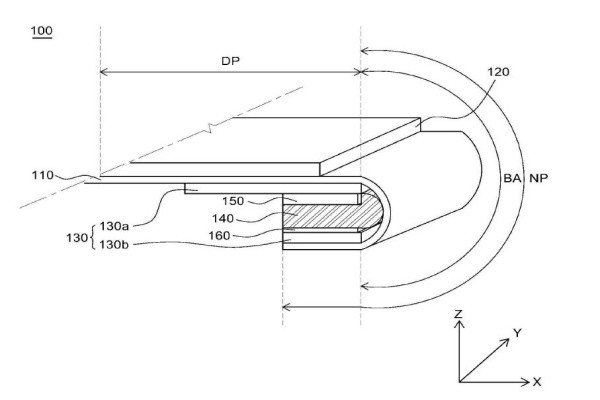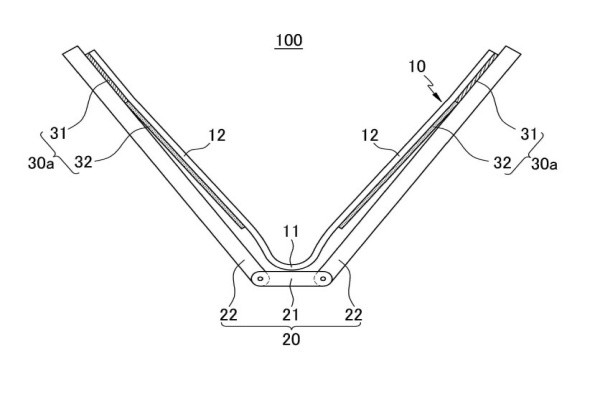South Korea’s two display panel powerhouses have begun upgrading their “bending” technology. As more foldable devices are becoming commercialized, “durability” of foldable display especially the area where screen is folded has emerged as a key factor to gain competitive edge. They have begun competing against each other in order to develop foldable display that is flexible and can be used for a long time at the same time.
According to the industry on Monday, LG Display recently applied for a patent on “flexible display manufacturing method”. This patent is for a technology that minimizes wrinkles that can occur when a foldable display substrate is bent and raises durability of foldable display by minimizing stress that can be applied on the display as substrate changes its shape.

Usually, a foldable display is arranged with various parts including film that supports substrate. Whenever substrate is bent, there is force exerted on these parts causing internal stress and substrate to be deformed.
In order to resolve these issues, LG Display applied “control layer” that minimizes internal stress on substrate. So-called internal stress absorbing layer acts as a cushion and minimizes wrinkles.
“We have developed a method that can minimize deformation by reducing stress that can be exerted on a particular area when flexible substrate is bent.” said LG Display in its application for the patent. “We confirmed that the method greatly minimizes stress exerted on flexible OLED substrate.”

During similar time, Samsung Display applied for a patent on “folding display”, which is a completely new manufacturing technology related to foldable display. Just like LG Display, the purpose of its technology is to prevent damage on panel by minimizing bending stress that can occur whenever flexible substrate changes its shape.
Samsung Display focused on adhesive that is used on hinge and it tested a material that changes its adhesion depending on the amount of force occurring from foldable display being folded. For example, this material will be separated from its support as it loses its adhesion when a panel is folded and recover its adhesion as the panel is unfolded.
“It is likely that we will utilize decompression pressures sensitive adhesive (PSA) that can be attached or separated even through low pressure.” said Samsung Display in its application. “Our method can raise the durability of panel by minimizing internal stress.”
It is expected that the competition for “bending” technology related to foldable display will become even more intense as foldable display that has much less volume and weight than current devices while being able to cover a large area has emerged as a next-generation display device. Such display is being used in latest smartphones such as Galaxy Z Fold 2 that was introduced by Samsung Electronics recently.
“There will be more demands for foldable displays with smartphones at the center as 5G mobile network starts to become the norm.” said a representative for the industry. “LG Display and Samsung Display will put in efforts to develop an advanced “bending” technology that is more superior than that of its competitor.”
Staff Reporter Yun, Heeseok | pioneer@etnews.com